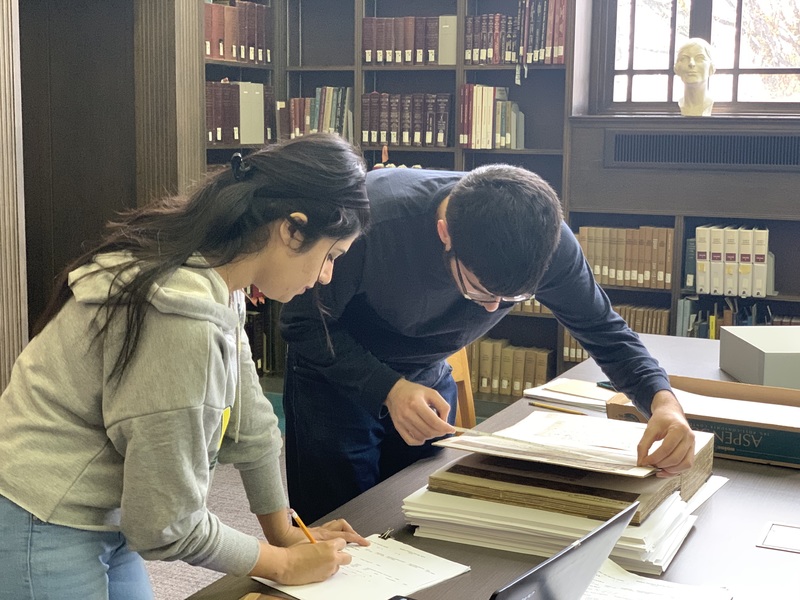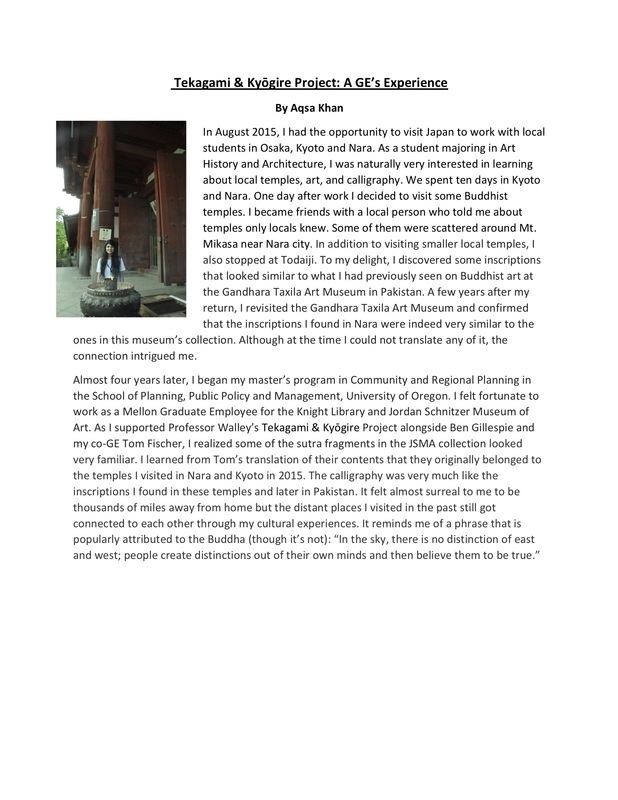Tekagami & Kyogire Mellon GE Experiences
Item
Title
Tekagami & Kyogire Mellon GE Experiences
Description
Research on a kohitsugire begins with taking precise measurements of a calligraphy fragment. The measurements allow a scholar to look for other fragments from the same original (called tsure in Japanese, or “mates”). Reuniting the fragment with other pieces from the same original may provide key information regarding its calligrapher and the date and other circumstances of its initial production. For instance, based on the measurements we collected, Dr. Sasaki Takahiro (who contributed a column essay to this website entitled “Notable Characteristics of the Oregon Tekagami”) was able to hypothesize that fragments 143 and 276 are most likely tsure cut from the same original.
In our Tekagami & Kyōgire project, the Mellon GEs, Tom Fischer and Aqsa Khaliq Khan, received guidance on handling artworks from staff at the Jordan Schnitzer Museum of Art and collected preliminary measurements for all 319 fragments in the SCUA tekagami and 36 sutra fragments from the JSMA collection.
In our Tekagami & Kyōgire project, the Mellon GEs, Tom Fischer and Aqsa Khaliq Khan, received guidance on handling artworks from staff at the Jordan Schnitzer Museum of Art and collected preliminary measurements for all 319 fragments in the SCUA tekagami and 36 sutra fragments from the JSMA collection.

